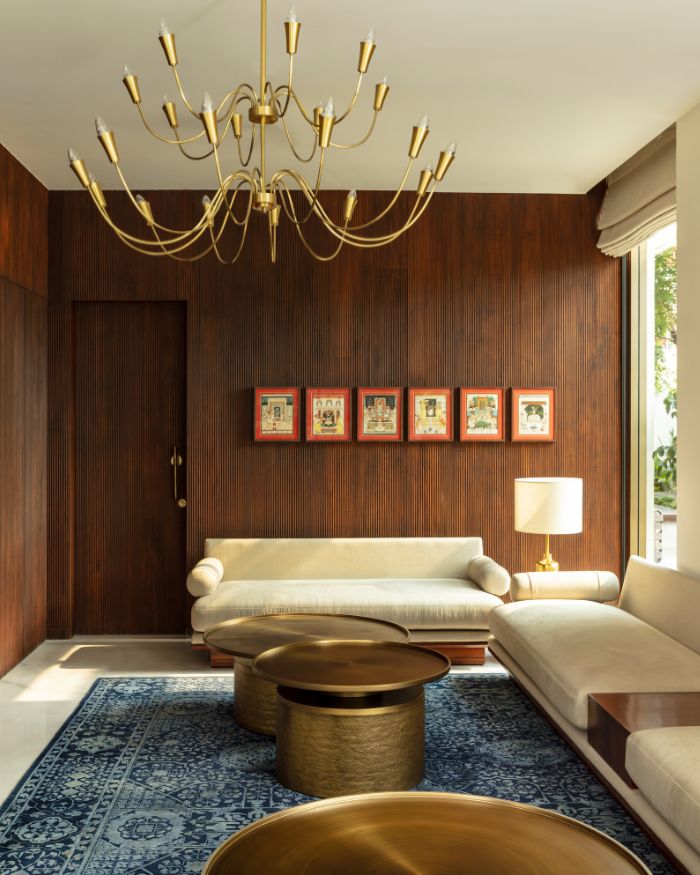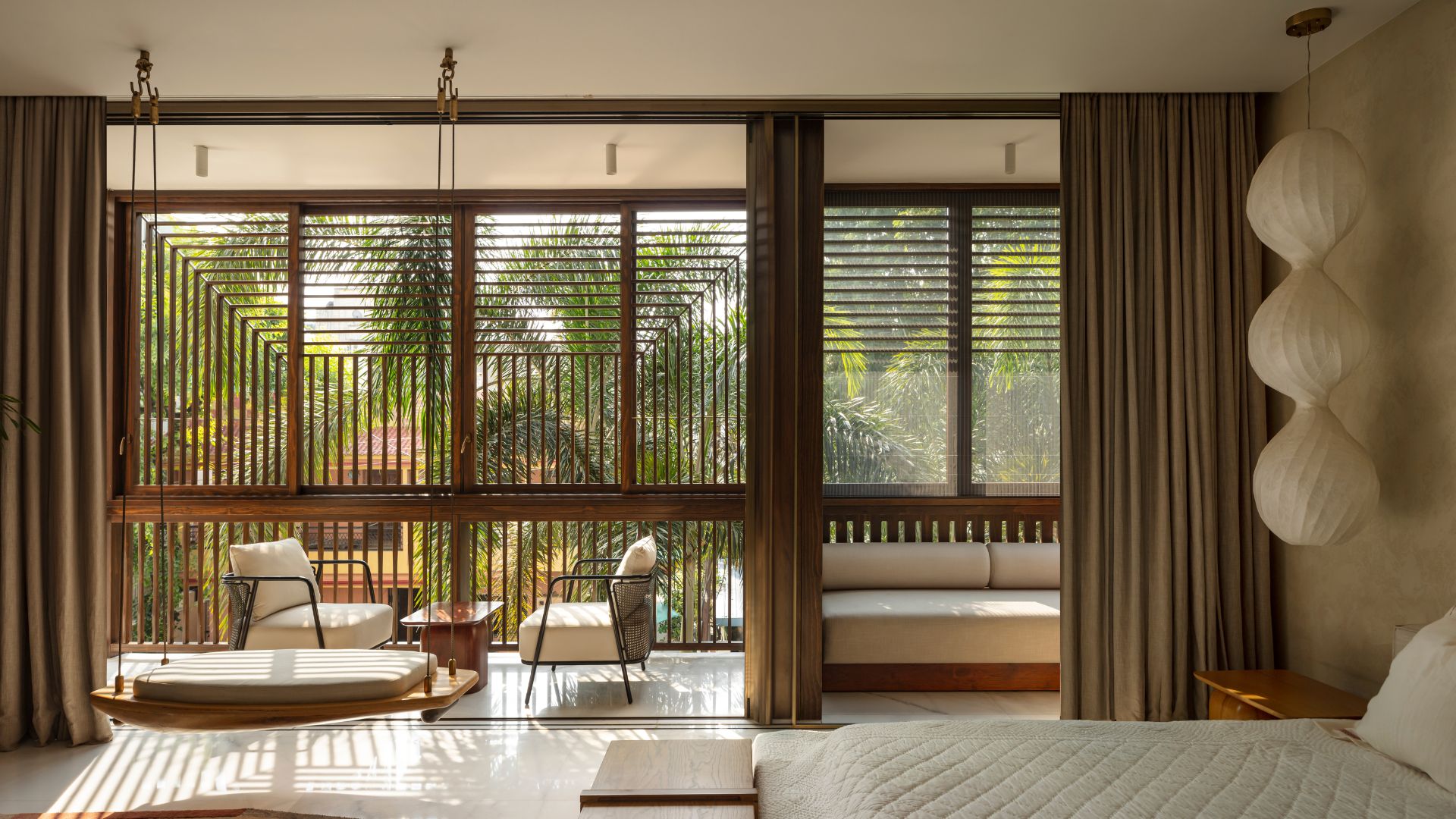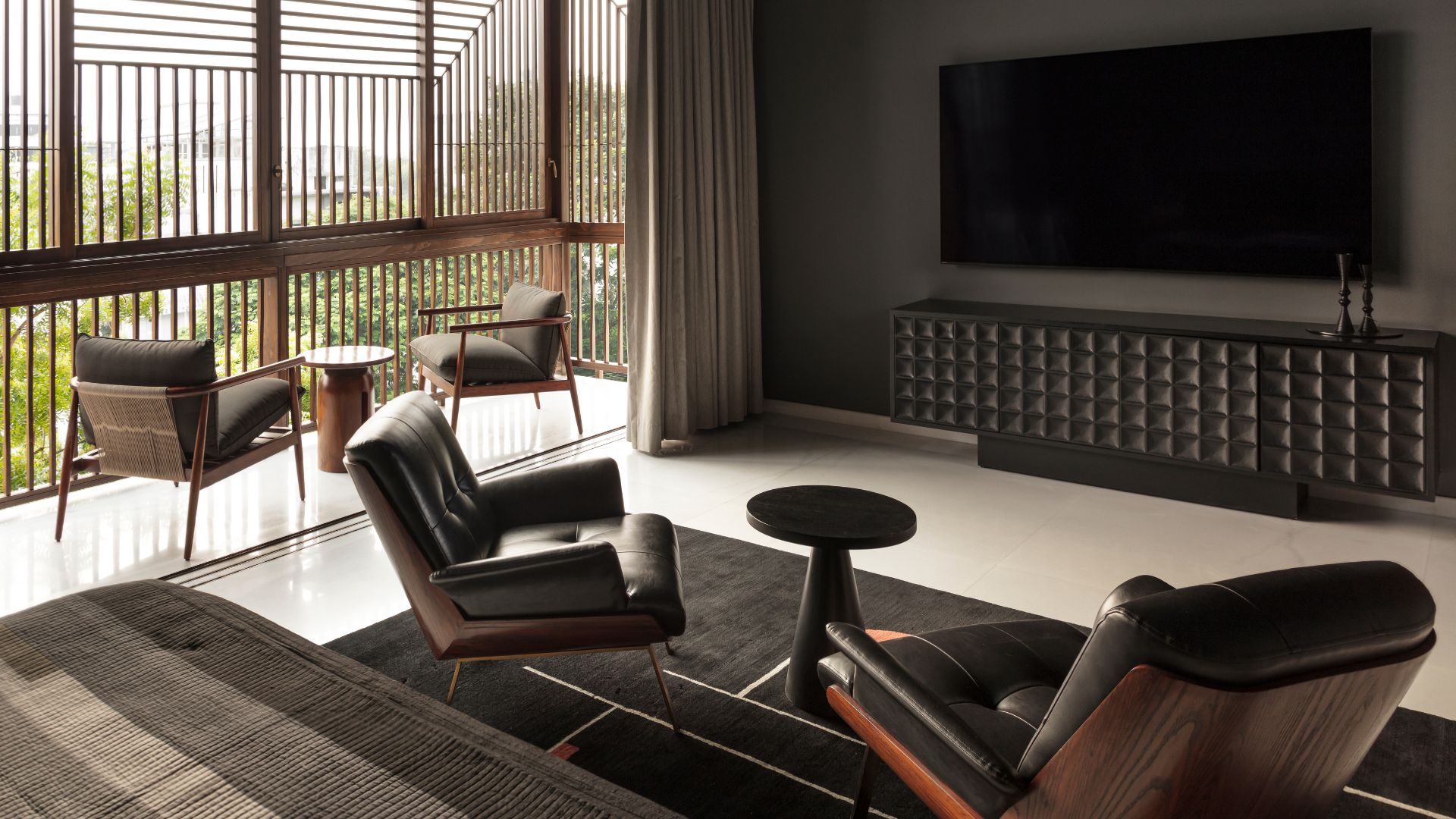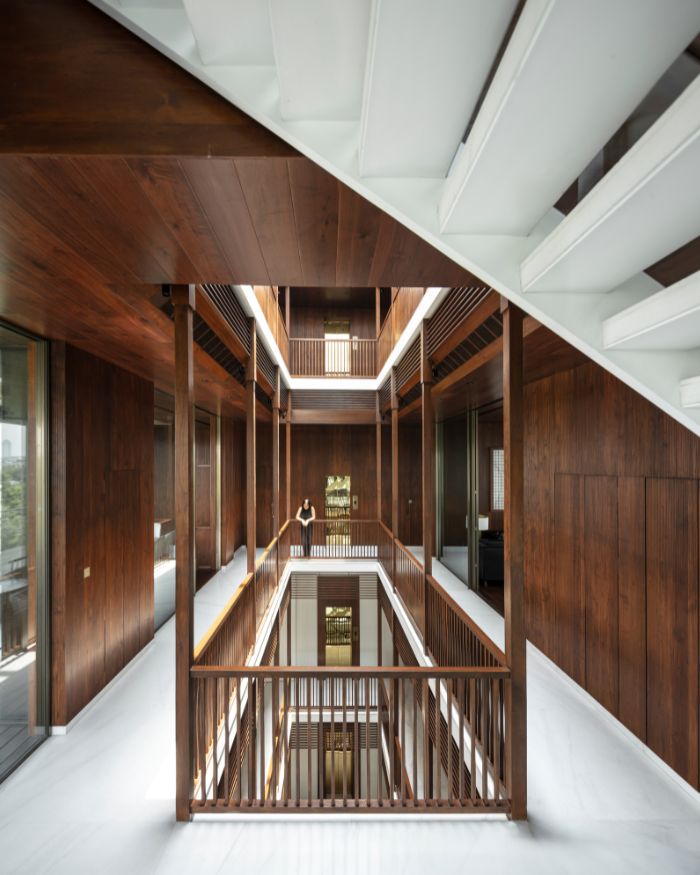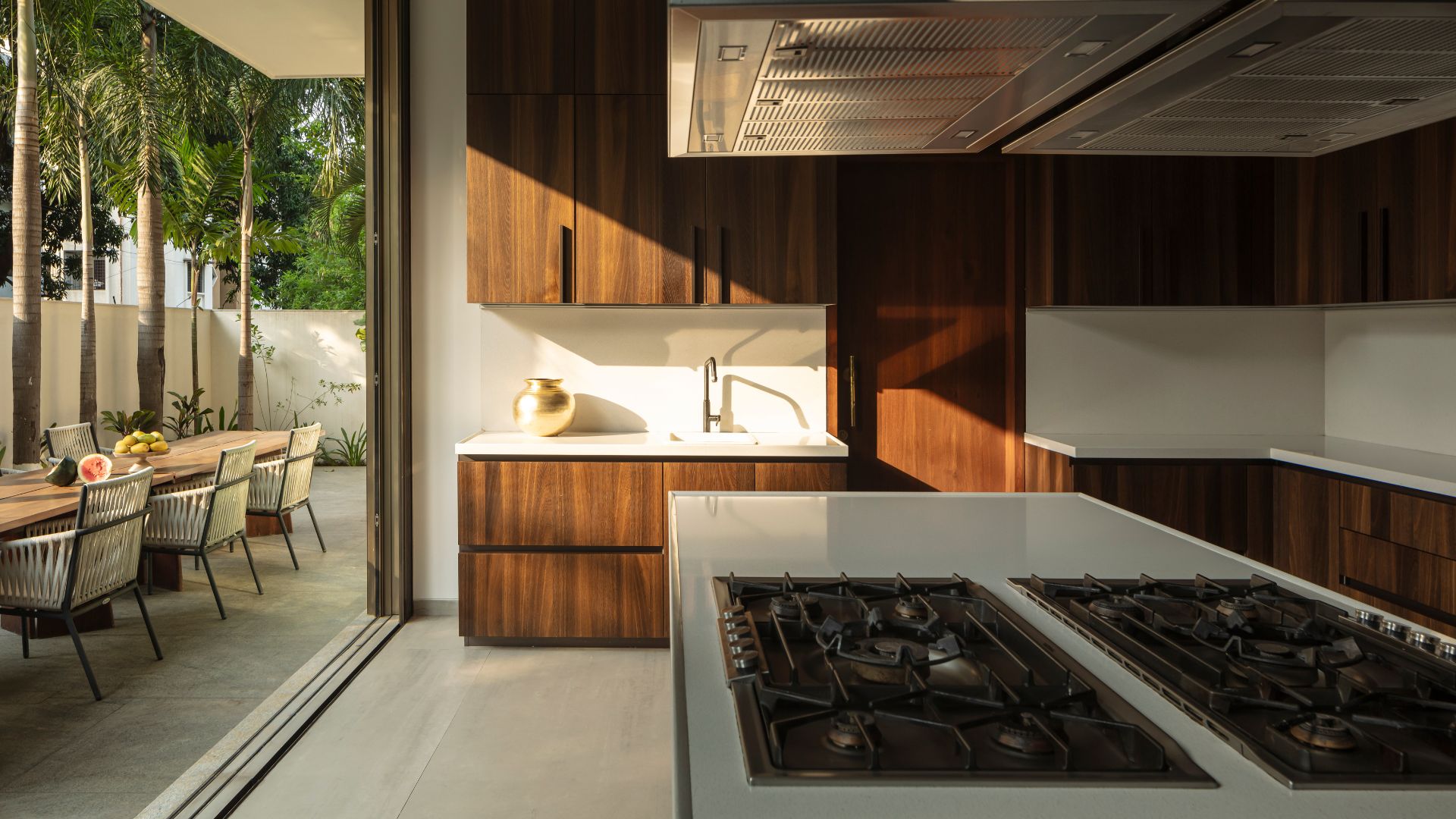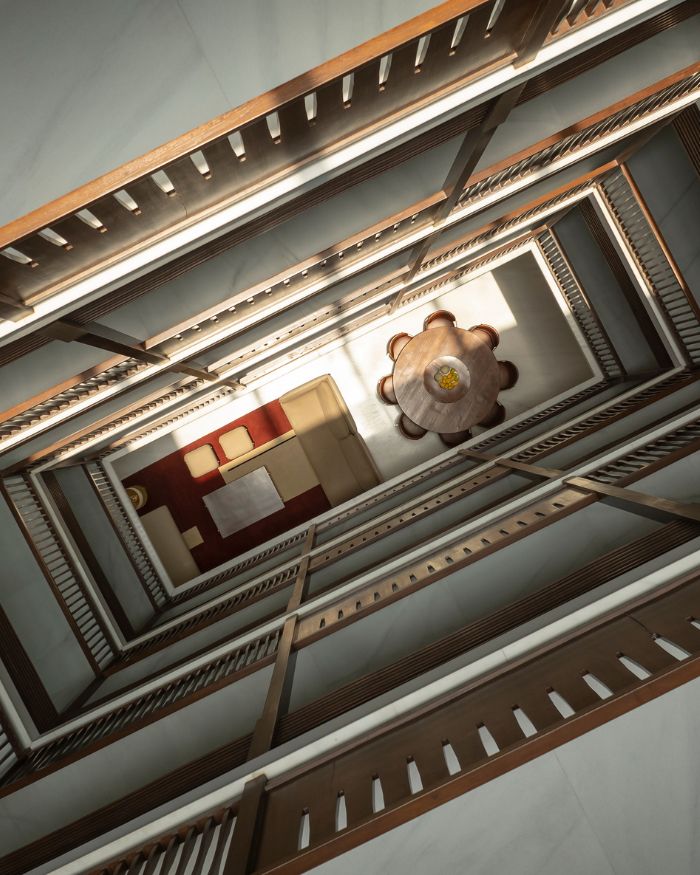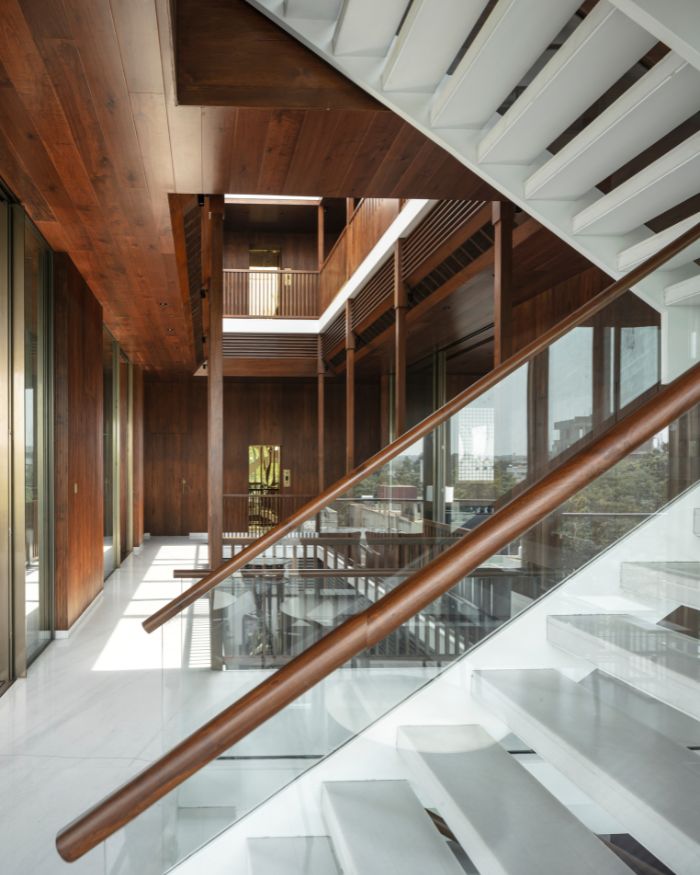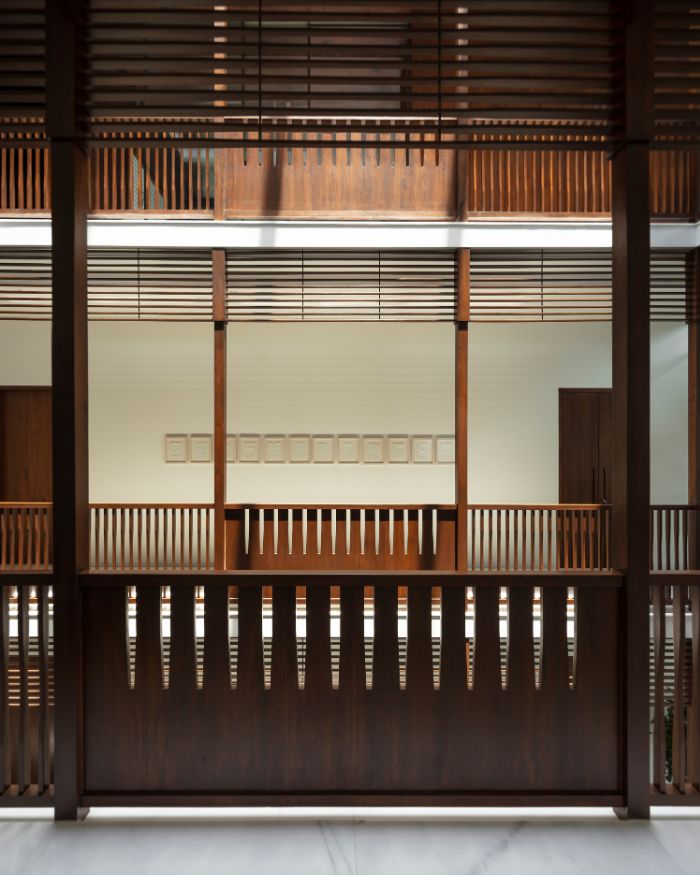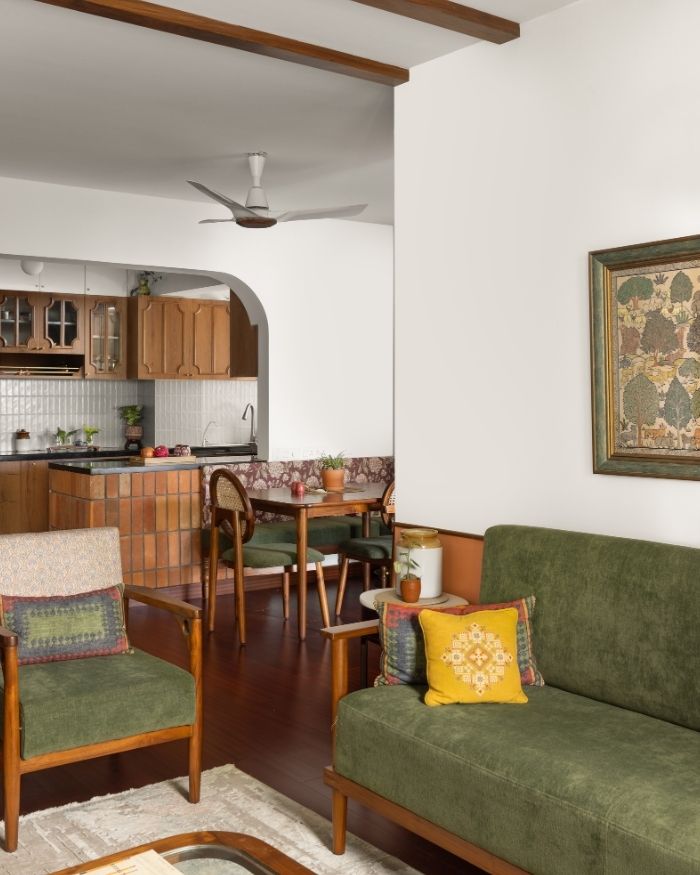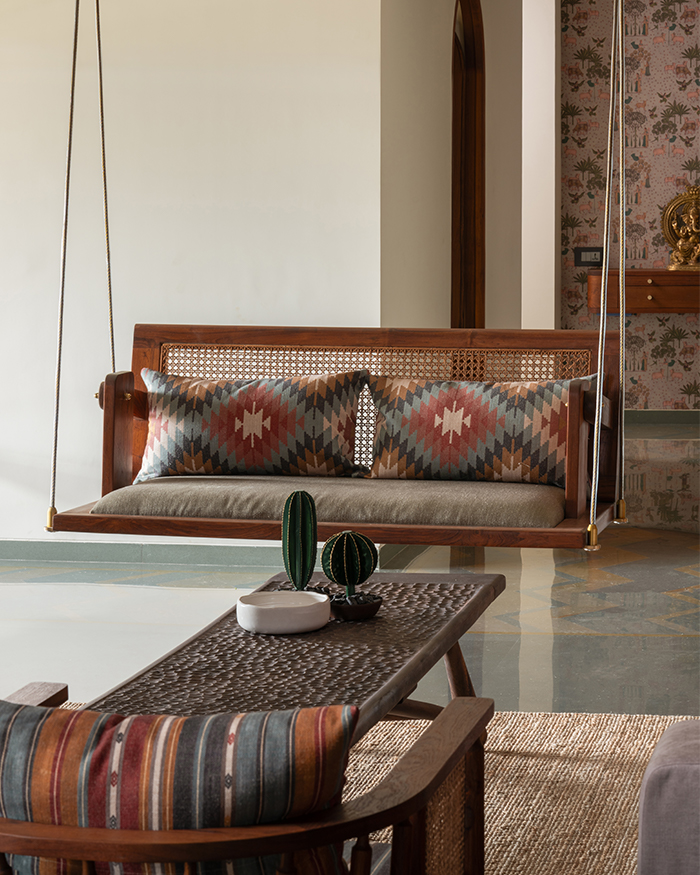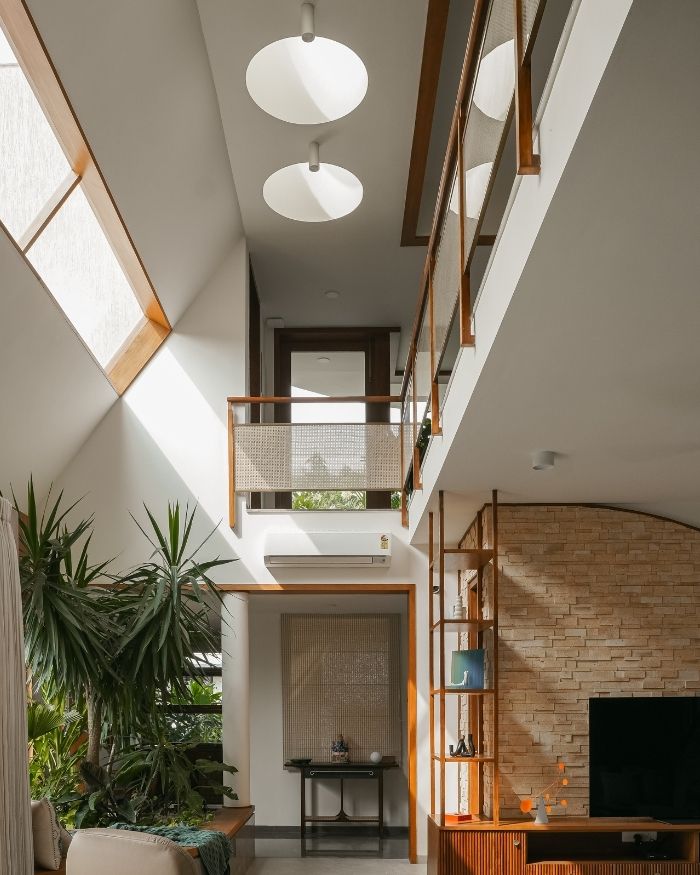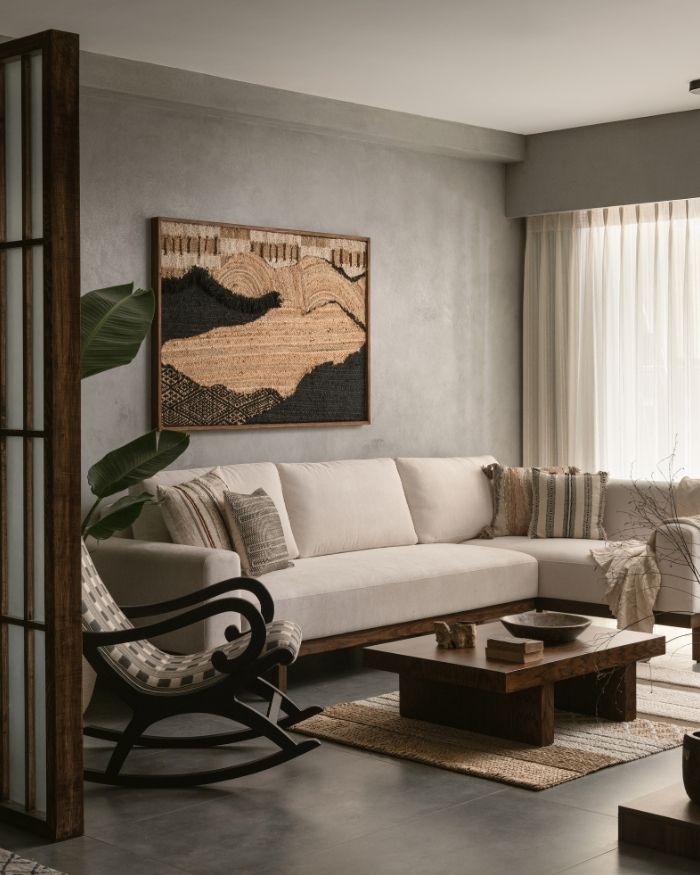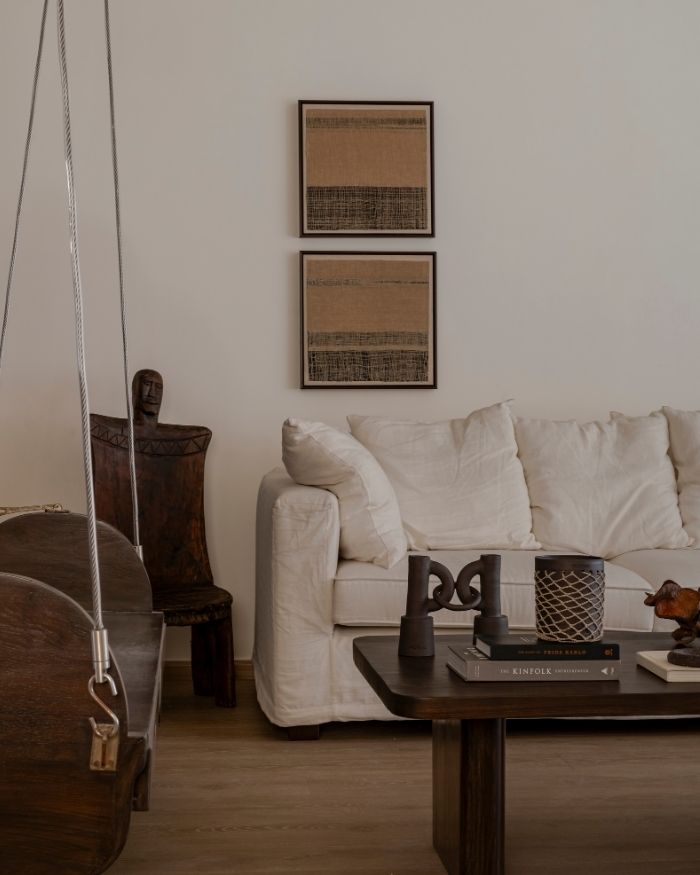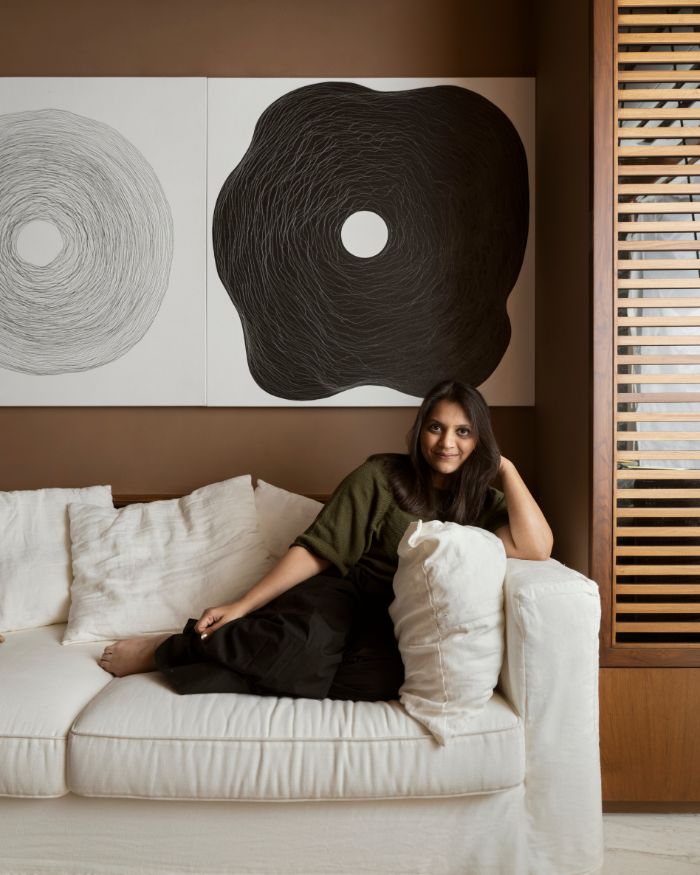Before anything else, this home feels familiar, nostalgic and as though it carries within it more than meets the eye. Inspired by old havelis and wadas, and their courtyards, balconies and shaded corridors, this home in Nagpur crafted by SJK Architects brings back a kind of living urban dwellers may have left behind. There is always sunlight, even on the lowest floor and a breeze that moves through the timber jaalis!
Amidst the busy neighbourhood in Gokulpeth, it sprawls about 20,000 sq ft built over six levels, just next door to the family’s old home. Three generations live under one roof and each has space to grow, while staying close. “Hailing from North India, the family: grandmother, her two sons and their wives, and three grandchildren, held deep nostalgia for ‘havelis,’ large residences with communal courtyards (chowks), projecting balconies (jharokhas) and intricate brick or stone lattice screens (jaalis) vernacular to many western and northern regions of India,” shares Shimul Javeri Kadri, Founding Partner at SJK Architects, alongside firm Partners Vaishali Mangalvedhekar Roshni Kshirsagar.
